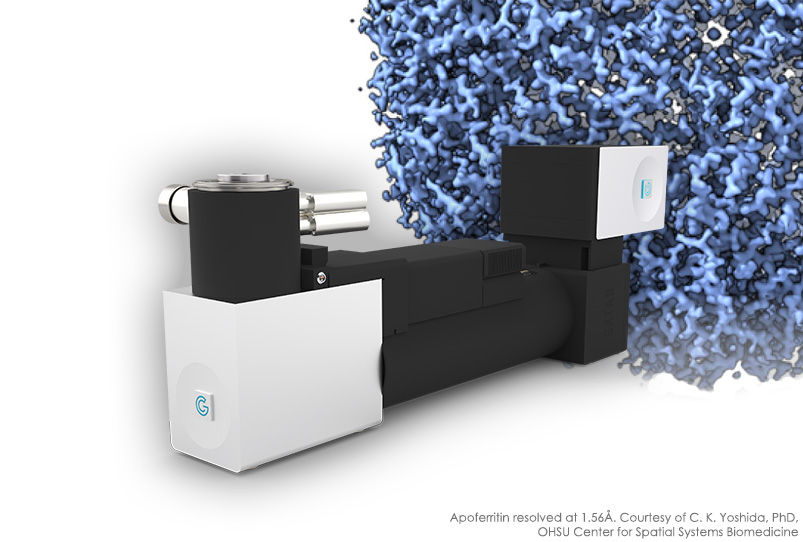Combines Gatan’s GIF electron optics, K3 camera and world-class software.


The Gatan BioContinuum HD is a TEM imaging filter for cryo-EM with optional EELS and EFTEM capabilities.
It’s only full-featured, post-column imaging and energy filter available. The BioContinuum HD delivers zero-loss filtering to improve the contrast of TEM images for both life and material science, and can also acquire EELS and EFTEM data.
Combines Gatan’s GIF electron optics, K3 camera and world-class software.
As well as cryo-EM, cryo-ET and low-dose STEM spectrum imaging.
Straightforward software, and auto tuning and alignment.
Consistent data quality without downtime.
The new Gatan BioContinuum HD provides zero-loss filtering to improve the contrast of TEM images in both life and material science applications. There’s also the option to add features for acquiring EELS (Electron Energy Loss Spectroscopy) and EFTEM (Energy-Filtered Transmission Electron Microscopy) data.
The BioContinuum HD imaging filter is compatible with most TEMs from Thermo Fisher, JEOL and Hitachi.
It combines with Gatan’s Microscopy Suite software including DigitalMicrograph, STEMPack spectrum imaging, Latitude S, Latitude T and Latitude D.
You can also use Thermo Scientific EPU software, Thermo Scientific Tomography software, Serial EM and Leginion for traditional life science data collection.
The BioContinuum HD incorporates several powerful technologies from Gatan:
The BioContinuum HD is optimised for:
Gain insights into the atomic structure of biological macromolecules and disease progression at the molecular level, and broaden your research to applications at the convergence of life and material science.
Gatan offers the most stable optics available. ZLP positioning delivers consistent data quality without downtime.
Cutting-edge aberration correction reduces image and energy distortion for uniform imaging over the entire field of view.
Gatan’s DigitalMicrograph, Latitude and AutoFilter software is straightforward and easy to use, while still giving you full power and flexibility.
Tuning and alignment are performed with one button, using smart algorithms. This speeds up the process and makes optics alignment a much simpler process.